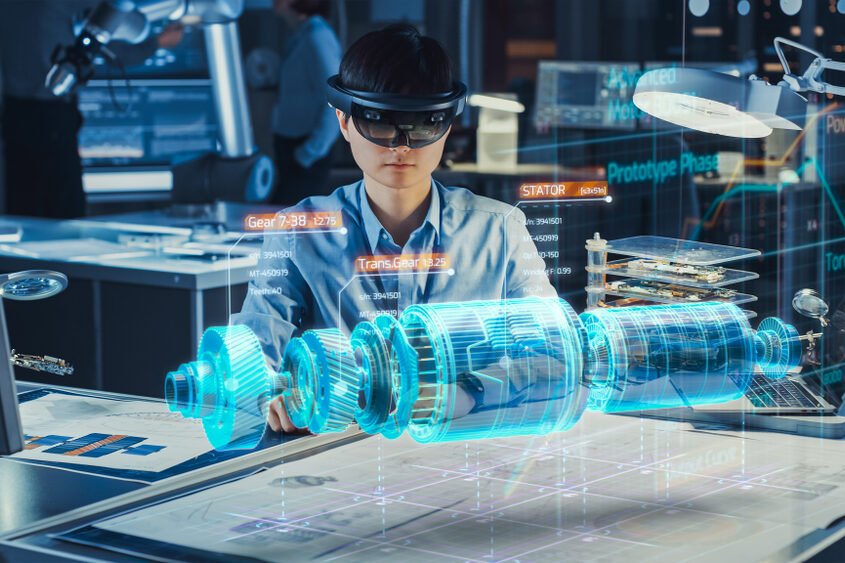AR Glasses Are Blurring the Line Between Real and Digital

The latest generation of AR glasses doesn’t just display data — it transforms how people experience the world. From turn-by-turn directions floating in your field of view to restaurant reviews appearing over a café’s entrance, these devices layer digital content onto physical space in real time. The result is a constantly shifting hybrid world where every decision can be influenced by an algorithm or a pop-up.
This merging of realities can be incredibly convenient, but also deeply disorienting. As users grow accustomed to navigating life through a screen hovering over their vision, their connection to unfiltered reality may start to slip. Real-world decisions increasingly happen through a gamified lens — one where attention is nudged, rewards are tracked, and spontaneous experience becomes harder to find. It’s not just about tech enhancement anymore. It’s about reshaping perception itself, often without users even realizing what they’ve given up.
Gamified Metrics Are Changing Human Behavior
At first, the idea of earning points for walking more, talking to strangers, or completing daily goals through AR glasses sounds like a motivational dream. And to some extent, it works. Gamified incentives boost engagement, create healthy competition, and make ordinary routines feel like missions. But this constant reward feedback loop can also turn daily life into a never-ending scoreboard.
The more time people spend gamifying their behavior, the more they begin chasing outcomes for the sake of the reward — not because it’s meaningful. Over time, this can chip away at intrinsic motivation. Why strike up a conversation if it doesn’t trigger a badge or progress bar? Why take the scenic route if your glasses nudge you toward the “efficient” one? The promise of constant feedback can quietly erode freedom and authenticity. You’re not just living — you’re performing, being scored, and competing in a game you didn’t ask to play.
Augmented Social Interactions Might Feel Less Human
One of the selling points of AR glasses is enhanced communication. Imagine looking at someone and seeing their name, job title, or shared interests pop up instantly. It’s meant to reduce awkwardness, boost connection, and streamline socializing. But there’s a deeper cost to consider — these enhancements may start replacing the real emotional work of getting to know someone.
When every encounter is overlaid with digital context, spontaneity fades. Conversations are no longer open-ended; they’re filtered through a system of data points and predictive cues. It can feel efficient, yes — but also staged. People may become less curious, less attentive, or more dismissive based on the information presented before a word is even spoken. As AR glasses reshape how we see others, they may unintentionally train us to judge faster, listen less, and treat relationships more like character profiles than complex, living experiences.
Privacy Becomes a Casualty of Constant Surveillance
For AR glasses to offer real-time recommendations and overlays, they need access to a constant stream of visual and contextual data. That means your surroundings and everyone in them are being scanned, tagged, and processed by your device, often without their knowledge or consent. As AR glasses become more common, public and private spaces alike are turning into zones of ambient surveillance.
It’s not just about cameras anymore. It’s about location tracking, eye movement data, facial recognition, and biometric patterns being collected and analyzed on the fly. While companies promise to safeguard this data, the truth is we’re only beginning to understand how much is being gathered — or how it might be used. The person next to you in line might be seeing your name, income bracket, or social media highlights without you ever knowing. In this gamified future, privacy isn’t just lost. It’s traded for convenience, one glance at a time.
Constant Overlays Are Rewiring Attention
Our attention spans are already under pressure thanks to smartphones, notifications, and content overload. AR glasses take this to a new level by inserting real-time overlays into every physical interaction. Whether it’s weather data while you’re walking, trivia during conversations, or real-time feedback during workouts, your brain is now balancing two worlds at once — the one in front of you, and the one floating just above it.
This dual-tasking doesn’t just split focus. It rewires it. The brain learns to expect stimulation at every turn, making quiet moments feel empty and reality feel incomplete without enhancements. Over time, it becomes harder to engage deeply, to stay bored long enough to daydream, or to find peace in stillness. AR might promise productivity and efficiency, but it also introduces a form of cognitive clutter that’s hard to escape. In this new version of life, being truly present may become one of the rarest achievements of all.
Your World Could Be Curated Without You Realizing

AR glasses aren’t just tools — they’re lenses through which reality is interpreted. Behind the sleek interface are algorithms that decide what information to show you, what to filter out, and how to shape your experience. From restaurant recommendations to real-time ads, the world becomes a curated feed — one that reflects not just your preferences, but the goals of whoever designed the software.
This curation can subtly narrow your worldview. If you always see only the “best-rated” places or people who share your views, your perception of reality shifts to fit a filtered version of life. Over time, that can reinforce biases, shrink curiosity, and limit exposure to unfamiliar or challenging perspectives. Like a social media echo chamber made physical, AR glasses risk turning the world into a series of comfort zones. You’re no longer just seeing through a lens — you’re seeing what the lens wants you to see.
Kids Might Grow Up Never Knowing Unfiltered Reality
Children born into a world where AR glasses are as common as smartphones may never experience life without digital enhancement. Their playgrounds might have virtual games embedded in the swings. Their classrooms could feature floating lessons tailored by AI. Even friendships might start through avatars and overlays that shape how classmates interact and perceive each other.
This sounds futuristic and exciting — but also a little sad. What happens to the joy of discovering something for yourself, without prompts? Or the awkward magic of figuring out a social situation with no help? As kids come to rely on real-time suggestions, nudges, and digital hand-holding, they may miss out on the very messiness that builds confidence and empathy. A gamified childhood might create sharper minds but shallower experiences. It could raise a generation that’s tech-savvy but disconnected from what it means to feel something purely, without an interface.
The Workplace Could Become a Scoreboard
In some industries, AR glasses are already being tested to boost productivity. Imagine factory workers getting visual instructions while assembling parts, or retail staff receiving customer data in their peripheral view. On the surface, this seems like a win — faster training, fewer errors, more efficiency. But this constant monitoring can quickly evolve into a system of performance tracking where every movement is measured, analyzed, and scored.
Employees may start working not just for paychecks, but to maintain scores, rankings, and visual feedback loops. The line between motivation and pressure becomes thin, and burnout can rise when performance feels less human and more mechanical. You’re not just doing your job — you’re playing a game, one with invisible observers and constantly updating stats. In that environment, individuality, creativity, and rest can be seen as inefficiencies. The future of work may be augmented — but it might also feel less like a team and more like a never-ending competition.
Escaping AR May Become Socially Unacceptable
Even now, stepping away from your phone for a few hours can raise eyebrows. Imagine what it will feel like when removing your AR glasses means you can’t participate in conversations, navigate a city, or engage in the workplace. As these devices become embedded in daily life, opting out might not feel like a choice — it might feel like disappearing.
The more people wear AR glasses, the more pressure there will be to stay connected, to stay enhanced. Those who don’t might struggle to find jobs, keep up socially, or even interact in increasingly digitized public spaces. What was once an optional upgrade could become a silent mandate. Not through regulation, but through social expectation. In this way, AR doesn’t just change how we see — it changes what’s considered normal. And once normal becomes augmented, the unfiltered world starts to feel like a glitch.
The Game Doesn’t Pause Even When You Need It To

Video games have pause buttons. AR life doesn’t. Once your glasses are on, the stream of information, alerts, and digital cues doesn’t stop just because you’re tired, overwhelmed, or emotionally drained. Notifications follow you into conversations. Metrics hover during meals. Suggestions pop up mid-thought. Your brain is never really “off,” because the feed is always on.
This kind of always-on interface isn’t just exhausting — it’s invasive. It leaves little room for daydreaming, reflecting, or simply being. Even meditation or rest can be gamified into a “mindfulness score.” In a world where reality is enhanced at all times, there’s barely any space to just exist. The same tool that promised to make life more seamless may end up crowding out the very things that make us human spontaneity, quiet, boredom, and genuine disconnection.
